#How much sugar is produced from 1 ton sugarcane?
Explore tagged Tumblr posts
Text
Sugarcane Farming In Kenya, its importance, challenges, and opportunities.
Sugarcane farming is an important sector of agriculture in Kenya, contributing significantly to the country’s economy. In this article, we will discuss the history of sugarcane farming in Kenya, its importance, challenges, and opportunities. History of sugarcane farming in Kenya Sugarcane farming in Kenya can be traced back to the 1920s when sugarcane was first introduced in the country. The…

View On WordPress
#cost of sugarcane farming in kenya#How long does sugarcane take to mature?#How many tonnes does an acre of sugarcane produce?#How much money is made from sugarcane?#How much sugar is produced from 1 ton sugarcane?#How profitable is sugarcane farming in Kenya?#Is sugarcane hard to farm?#Is sugarcane plantation profitable?#sugarcane farming in kenya#sugarcane farming in kenya pdf#sugarcane farming in western kenya#sugarcane farming pdf#sugarcane farming process#sugarcane farming profit per acre#sugarcane profit per acre in kenya#What are 2 negative effects of the cultivation of sugar cane?#What are the challenges of sugarcane?#What are the factors affecting sugarcane farmers?#What are the problems facing sugarcane farming in Kenya?#What is a sugarcane farmer?#What is the current status of sugar cane industry in Kenya?#What is the highest yield of sugarcane per acre?#What is the major disease of sugarcane crop?#Why are sugarcane farms so slow?
0 notes
Text
Greener Takeout: Sustainable Packaging Strategies for Modern Restaurants
Sustainability is no longer just a buzzword; it’s a necessity. As climate change and plastic pollution continue to grab headlines, more industries are stepping up to reduce their environmental impact—and the restaurant industry is no exception. One key area where restaurants can make a difference is through sustainable packaging.
Whether it’s takeout containers, delivery bags, or straws, the packaging used to serve food has a profound effect on the environment. But the good news is, switching to eco-friendly alternatives doesn’t have to be a complicated or expensive endeavor. In fact, it can offer significant benefits to your business, your customers, and the planet.
In this article, we’ll dive into the importance of sustainable packaging for restaurants, explore practical alternatives to single-use plastic, and show how restaurants can make the transition to greener packaging.
Why Sustainable Packaging Matters:
The foodservice industry is a major contributor to waste. In fact, according to the Environmental Protection Agency (EPA), food packaging accounts for a large portion of the plastic waste that ends up in landfills and oceans. Some statistics to consider:
Plastic Waste: Around 8 million tons of plastic end up in the ocean each year, with much of it coming from single-use items like food packaging.
Landfill Impact: Items like Styrofoam and plastic containers take hundreds of years to break down, leaching toxic chemicals into the environment in the process.
For restaurants, adopting sustainable packaging is not just about being eco-friendly—it’s also about responding to growing consumer demand for green practices. A 2023 survey found that 73% of consumers are willing to pay more for food from a brand that is environmentally responsible. In other words, sustainable packaging can directly influence your restaurant’s bottom line.
The Key Benefits of Sustainable Packaging:
Before we look at alternatives, let’s explore why sustainable packaging is beneficial for restaurants.
1. Environmental Impact Reduction
The most obvious benefit is the reduction in environmental harm. By switching to biodegradable or recyclable materials, restaurants can cut down on single-use plastic waste, reduce carbon footprints, and contribute to a cleaner planet.
2. Cost Efficiency
While eco-friendly options might seem more expensive upfront, they can be cost-effective in the long term. Many sustainable materials are cheaper to produce, and some alternatives, like compostable containers, help reduce waste disposal fees. Additionally, reusable packaging models can eliminate the need for frequent purchases of disposable products.
3. Meeting Customer Expectations
Modern diners care about sustainability. A growing number of customers actively seek out businesses that align with their values. By offering green packaging, you appeal to environmentally conscious customers, which can drive loyalty, repeat business, and word-of-mouth recommendations.
4. Compliance with Regulations
As cities and governments worldwide introduce stricter regulations on plastic use, adopting sustainable packaging now means staying ahead of the curve. By making the transition early, you can avoid potential fines or legal issues related to plastic bans or recycling mandates.
5. Enhancing Your Brand Image

Sustainable Packaging Alternatives for Restaurants:
There is a wide range of sustainable packaging options available to restaurants today. The key is finding the right balance of cost, functionality, and environmental impact.
1. Compostable and Biodegradable Containers
Made from plant-based materials like cornstarch, sugarcane, and bamboo, compostable packaging breaks down quickly in industrial composting systems. It’s perfect for takeout containers, plates, and utensils.
Sugarcane (Bagasse): A byproduct of sugar production, bagasse containers are durable, microwaveable, and compostable. They can handle both hot and cold foods.
Cornstarch: This plant-based plastic is biodegradable and compostable, making it an excellent alternative for single-use cutlery and food containers.
Bamboo: A fast-growing, renewable resource, bamboo is often used for utensils, skewers, and takeaway packaging. It’s sturdy, compostable, and naturally antimicrobial.
2. Recycled Paper and Cardboard
Paper and cardboard are two of the most widely accepted recyclable materials. Many foodservice items like pizza boxes, sandwich wraps, and takeout bags can be made from recycled paper or cardboard. These materials are biodegradable and recyclable, making them a more sustainable choice.
Kraft Paper: This unbleached, brown paper is biodegradable, compostable, and recyclable. It’s commonly used for wrapping food, sandwich bags, or as a liner for takeaway boxes.
Recycled Cardboard: Takeout containers made from recycled cardboard are an eco-friendly alternative that’s still sturdy enough for most restaurant needs.
3. Glass and Aluminum Containers
Glass containers, while heavier and slightly more expensive, are reusable and 100% recyclable. They’re an excellent option for restaurants offering premium takeout or delivery options, especially for items like sauces, salads, or soups.
Aluminum is another widely recyclable material. Containers made from aluminum (such as for baked goods or leftovers) can be reused multiple times and recycled endlessly without degrading.
4. Plant-Based Plastics (PLA)
Polylactic acid (PLA) plastics are made from renewable resources like corn or sugarcane. These bioplastics are compostable, although they require industrial composting facilities to break down efficiently. PLA plastics can be used for everything from cups and containers to cutlery, but it’s important to make sure they are properly disposed of in the right composting environment.
5. Reusable Containers
For restaurants offering delivery or regular takeout, consider implementing a reusable container program. Customers could bring back their containers for a discount or a new meal in exchange. This not only cuts down on waste but also creates a sense of loyalty and community among your customer base.
Reusable Containers for Delivery: Partnering with a local service or using branded reusable containers for your takeout could set your restaurant apart. Think of it as a “returnable” system similar to reusable coffee cups.
6. Edible Packaging (Emerging Trend)
While still in its early stages, edible packaging made from seaweed, rice, or even fruit skins is an exciting innovation in sustainable packaging. These materials can eliminate waste entirely—customers can eat the packaging along with their food. While it’s not yet widespread, keep an eye on this area as it could transform how food is packaged in the future.
How Restaurants Can Make the Transition:
Transitioning to sustainable packaging isn’t an overnight process, but with a few strategic steps, restaurants can integrate eco-friendly alternatives seamlessly.
1. Assess Your Current Packaging
Start by auditing the packaging you currently use and identifying the most problematic items. What is easily replaceable? What has the biggest environmental impact? From there, prioritize alternatives based on ease of replacement and customer experience.
2. Partner with Sustainable Suppliers
Look for packaging suppliers who specialize in eco-friendly products. Many companies now offer a range of sustainable packaging materials and can advise on which options are most suitable for your needs. Look for certifications such as compostable or recyclable to ensure you’re making the right choices.
3. Educate Staff and Customers
Ensure that your staff is well-informed about your sustainable packaging choices so they can answer customer questions. Use signage to educate customers about the environmental benefits of your packaging and how to dispose of it correctly. If you’re offering compostable packaging, make sure customers know where to compost it.
4. Monitor and Improve
Once you’ve switched to sustainable packaging, monitor its impact. Are your customers responding positively? Is there less waste? Track your waste disposal costs and look for opportunities to further improve your sustainability efforts.
5. Promote Your Green Efforts
Don’t keep your sustainability efforts a secret. Promote your use of sustainable packaging through social media, your website, and in-store signage. Customers love to support businesses that are transparent about their environmental practices.
Conclusion: A Green Shift for the Future
Switching to sustainable packaging is an investment that will pay off in the long run. Not only does it help protect the planet, but it can also build customer loyalty, enhance your brand, and ensure compliance with future regulations. While the process may take time and planning, the rewards are undeniable.
By embracing sustainable packaging, restaurants can play a pivotal role in the fight against plastic pollution, while simultaneously meeting the expectations of an eco-conscious customer base. Making the change isn’t just good for the environment—it’s good for your business too.
#ecofriendlypackaging#entrepouch#brandpackaging#ziplockpouches#custompackaging#sustainablepackaging#greenpackaging#ecoconsciouschoices#packagingsolutions#ecofriendly
0 notes
Text
The Life of Henrietta the Hershey Bar
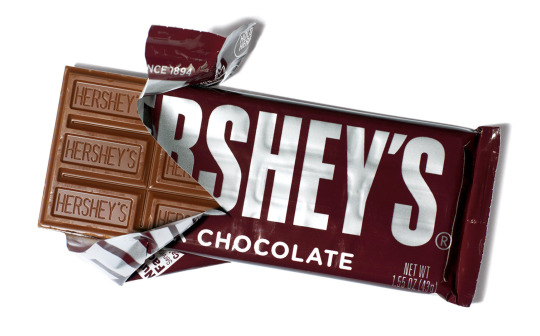
This is Henrietta the Hershey's Chocolate Bar (I was going to show a real picture but I ate her before I could take a picture), I bought her from Benny's Munchies for $1.58. The ingredients listed on her wrapper are as follows: sugar, milk. chocolate, cocoa butter, milk fat, soy, PGPR, and natural flavor. Despite her simple appearance, Henrietta has very complicated roots which stem from countries including Mexico, Canada, Ivory Coast Ghana, Indonesia, Ecuador, China, and Egypt. Henrietta's major ingredients are sugar, cocoa butter, and soy. Sugar is made in the leaves of the sugarcane plant through photosynthesis and stored in sugarcane stalks. Cocoa butter (the villain of this story) is the fat that comes from cocoa beans; the beans are roasted, stripped, and pressed to separate the fat (cocoa butter). Finally, soy is grown and harvested from planted soybeans.
The harsh, and sad truth about Henrietta's origin story is the horrible conditions those who created her roots go through. The chocolate business is full of violence, child labor, and underpaid workers who end working their entire lives for a salary we Americans could typically make in a month. Some of the places that produce chocolate are actively involved in Civil Wars, and the workers are still expected too harvest this essential part of Henrietta and her relatives. Additionally, there are tons of hidden costs, we consumers have no idea about. The sad truth is that the people who work day after day to produce cocoa and its sub products only see a mere 3% of the revenue. The other 97% is given to big companies, and essentially those who don't deserve it. The two international companies who are currently dominating the chocolate trade are Hershey Chocolate and Mars Inc. with a combined ~74% of shares in the market. In the United States, the Food and Drug Administration (FDA) regulates the chocolate trade, oddly enough they still allow for chocolate to be provided to the U.S.
After it has been harvested, the cocoa is usually fermented and covered with banana leaves, dried and packaged for transportation, and domestic transporters carry the packaged beans to either warehouses or processing factories. From there, the prices are set in the commodities market and distributed worldwide. The average store owner will enjoy a profit margin of 55-75% from the sale of chocolate. One thing producers focus on is how chocolate is marketed to consumers. Different companies have different strategies, but the most common techniques portray chocolate as delicious, appealing, and in some cases healthy. The company that produces Ferrero Rocher chocolates lean more towards making their chocolate appear to be "high class" which is why it is wrapped in such fancy, gold paper.
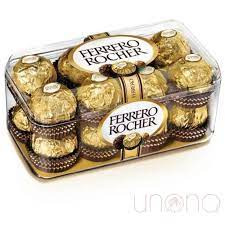
The most common strategy for marketing chocolate however, is to associate it with certain holidays like Valentine's Day, Halloween, and Christmas. During these three holidays, chocolate sales skyrocket and the companies that sell the chocolate see very high consumer numbers


youtube
All in all, Henrietta has a pretty sad life, and we're not even going to give a word to describe where she came from. I feel pretty bad for her, and after doing this assignment I might have to keep my distance from chocolate bars like Henrietta...
Major References 1. https://www.weforum.org/agenda/2020/11/cocoa-chocolate-supply-chain-business-bar-africa-exports/
2. https://www.foodcircle.com/magazine/cocoa-pricing-commodity-market
3. https://www.mvorganizing.org/how-much-profit-does-a-store-owner-make-on-a-bar-of-chocolate/#:~:text=chocolate%20so%20expensive%3F-,How%20much%20profit%20does%20a%20store%20owner%20make%20on%20a,margins%20between%2055%20to%2075%25.
0 notes
Text
Significant COVID-19 Impact on Sugar | Food and Beverage Industry | Data Bridge Market Research

COVID-19 Impact on Sugar in the Food and Beverage Industry
The sugar industry plays an important role in maintaining the economy of the country is also facing several challenges in the course of its journey. Recently, the threat which is posed by the novel coronavirus (COVID-19) is impacting sugar sector stakeholders badly. Due to this, the integrated industries all over the world are also facing multiple challenges such as production, transportation among others.
The entire value chain in the sugar sector from sugarcane, sugar, molasses, ethanol, and their subsequent marketing and export has been adversely affected due to the pandemic.
The industry is also facing reduced off-take from associated industries such as beverage and other FMCG companies due to the lockdown. The industries are shut to control the spread of coronavirus, due to which the demand for the sugar declined, and hence sugar sector is declining in generating revenue.
Mainly two of the country which produces sugar and dominating worldwide and also helping socio-economic development of the nation are now facing bigger challenges in this industry. They are Brazil and India in which India accounts for around 15.0 to 25% of the sugar and sugarcane production all over the world. Now, with the pandemic and lockdown, the consumption has fallen as people are made to stay at home and also shutdown in foodservice sectors such as bakeries, hotels, restaurants, and cafes reducing the demand for the sugar.
For instance, according to an article published by Sugar Asia magazine, it is expected that the consumption of sugar could fall to 25 million tons as against 26 million tons which were expected previously.
They have also said that it was found that in the first six months of sugar season from October 2019–March 2020 sugar production has decreased by 22.0% from the last year.
Table 1: Decreasing growth in the sugar production in first six months of sugar season.
Source: Sugar Asia Magazine
The operations for the sugar production were running up to the 3rd month of 2020. Further, it has been noticed that the production started getting affected so far in April on account of labor shortages due to COVID-19 breakout. Due to lack in value and supply chain, some other inputs which are need in sugar products such as Sulphur, lime, bags & other packing material were also not available or were less available due to disruptions in transportation.
Apart from production, the demand from the associated industries has also got reduced. The associated industries are a bakery, confectionery, and beverages among others. For instance, sugar supplies to the beverages manufacturers are greatly decreased as they have put off operations in bottling plants during the summertime when demand for such beverages is high.
Along with these, the food sector such as retail, hotel, and catering which are also larger consumers of sugar has reduced the demand of sugar by national lockdown as all hotels, restaurants, bars, sweetmeat shops, and other miscellaneous food establishments have been closed.
The international sugar prices have fallen by approximately 23.0% between January and April in the year 2020 as large supplier-nations such as Brazil, are switching from ethanol to sugar due to slack global oil demand and low crude oil prices. Thus, exports from India are likely to remain flattish compared with a 25-30% growth expected earlier. For instance, the drop in the export price of white sugar from USD 425 per tonne in February 2020 to USD 355/tonne at present time has resulted in declination in the market value of the sugar industry
Figure: Sugar price decreased from previous year (in USD Lbs.)
Source: Tradingeconomics
FAO has also given its estimates that global sugar prices fallen by 19.1% in March 2020 from February 2020 due to lower demand in the coronavirus outbreak.
In the crisis, sugar industry is facing multiple challenges from the production to trade due to which market value of industry is getting impacted in recent time. But in future, once the vaccine or medicine is made available in market against coronavirus and the spread of COVID-19 is under control, sugar industry will takes its position as of previous years. Again the demand will increase from food industries and food service sector and there will be increase in the value of the sugar market in future.
SUGAR MANUFACTURERS: PERSPECTIVE & INITIATIVES
The outbreak of COVID-19 has brought world to a halt where each and every industry has got an impact of it. This crisis has brought to an unexpected situation through which everyone is going on. With such unscrupulous situation, everyone is trying to get over of it. In all, one of the cannabis related product industry which has fallen badly due to Covid-19 in start of 2020. But rising support from several companies as well as governments are helping the industry to rebuild the position again in market.
The halt in the production of the sugar have led various food and beverages manufacturers to reduce and halt their production due to the shortage of sugar. For instance,
"Will temporarily cease operations due to a lack of raw materials." Production of sugar-based beverages has halted but non-sugar drinks like Diet Coke would continue.”
- Company. Coca-Cola
“Sugar companies in Brazil may face losses if prices continue to trade at 10 cents to 11 cents a pound.”
- Joamir Alves, CEO Grupo Virgolino de Oliveira SA
The government has taken initiatives to reduce the sugar consumption as it their consumption in soft drinks is one of the major causes of obesity, for instance,
“The Soft Drinks Industry Levy has been successful in reducing sugar intakes sugar via reformulation, and in raising much needed revenue for children’s services,” it said. “The current sugar levy sugar thresholds should be reduced, the rates increased, and it should be immediately applied to a calorie threshold in sugar sweetened milk and milk-alternative drinks.”
- Katharine Jenner - campaign director of Action on Sugar and Action
"The food industry is feeding us heavily discounted and promoted processed food and drink, full of salt, fat and sugar, giving us little feeling of satiation, which greatly increases our calorie intake. Millions of families face poverty sugar and food insecurity and are unable to access a nutritionally adequate diet.”
- Graham MacGregor from Queen Mary University on Sugar and Action
High demand of the ethanol due to their utilization in sanitizer production and high demand of the sanitizers have led government to push up the production of sugar.
For instance,
“The situation at present is such that even a mandatory 5 per cent blending of ethanol with petrol, as committed by the government to protect the environment three years ago, would be difficult to meet as a result of a short supply of sugarcane. With an expected fall in the cane output, the 20 per cent ethanol blending, which the government is planning to make mandatory, is unlikely to be practical,”
- Deepak Desai, the chief consultant of ethanolindia.net
“India should implement a more “ambitious” biofuel program that will help its sugar mills to increase production of ethanol and “balance the world sugar market”
- Brazilian Sugarcane Industry Association/ UNICA.
“Retailers are seeing a surge in demand while foodservice customers and themselves with more product than they need,” he said. “We are doing everything possible to connect customers together to move the extra product to where it’s needed most, while adapting our manufacturing plants to create a more agile supply system.”
- Mike Wagner, managing director of Cargill North America
“China represents more than 70% of the stevia leaves grown globally and is, therefore, a key supply base for stevia sweeteners, “Sweet Green Fields was among the rest factories approved by the Chinese government to re-open post-COVID-19 and is currently producing and supplying customers.”
- Shasha Yu, marketing director, Sweet Green Fields
“People tend to consider aspartame as a commodity but [we] turned it into a new ingredient that traveled by plane,” The air shipments are extreme – it was really at the very start of the crisis when people woke up and found out they would be out of product – but it shows you how crucial the role of aspartame in food is. I turned it into a joke, saying that our aspartame is traveling VIP.”
- Youssef Hamayet Elmili, global sales director at HSWT
Source: Company Websites, Magazines, Nutrition Journals, Portals
CONCLUSION
The threat posed by the growing pandemic novel coronavirus (COVID-19), has been the most recent once and it is impacting sugar industry stakeholders and its integrated industries, all over the world. Brazil and India are the top producers of sugar across the globe, each producing nearly 25% and 15% of global sugar and sugarcane, respectively. The development of COVID-19 will have a direct effect on the production and consumption of the sugar industry in the short term.
The ongoing COVID-19 pandemic has been putting pressure on the sugar consumption patterns, complemented with a reduced off-take from beverage and other FMCG companies amid the lockdown across multiple countries. As the beverage and sweetener sector is the bulk consumer of sugar, it is likely to adversely affect the consumption owing to the precautionary measures of avoiding social gatherings.
These developments and a drop in crude oil prices have caused a ripple effect on international sugar prices. The globe has witnessed a sharp drop in sugar price, wherein in March 2020, the global prices fell steeply by 22%.
Owing to the petroleum crisis, Brazil has planned to increase their sugar production, to offset the decline in sugarcane consumption from the ethanol industry. This is further expected to affect the prices of sugar in the international market. Further, due to COVID-19, temporary disruptions in the supply chain have been experienced by the millers.
Owing to the pandemic, there have been major shifts in consumer preferences, with the increasing awareness of a healthy lifestyle. Consumers have started substituting conventional ingredients with healthier alternatives. This would also affect the sugar industry. With “no-added-sugar” and “high protein, low carbs” diet trend among consumers, the demand for sugar was already offset in the past, while this trend is expected to be boosted in the coming years. Hence the future of the sugar industry is expected to witness steady demand, majorly from the beverage industry in the coming years, even after the COVID-19 phase.
#Sugar Market#Sugar Market Analysis#Sugar Market Analysis in Developed Countries#Sugar Market by Application#Sugar Market by Type#Sugar Market Development#Sugar Market Forcast#Sugar Market Future Innovation#Food and Beverage Industry
0 notes
Text
Top 10 Natural Sweeteners & Sugar Alternatives
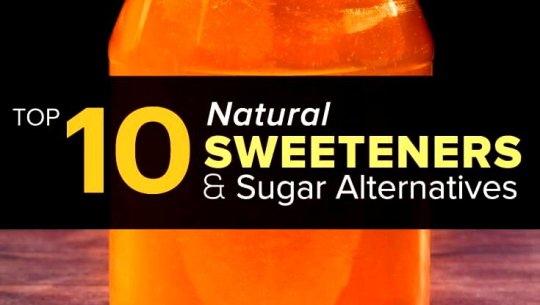
The average American is taking in 400 calories a day from added sugars! And while the consumption of refined sugar is on the rise, so are artificial sweeteners. Artificial sweeteners like aspartame, sucralose, ACE K and saccharin have been debated for years in regard to their damaging side effects.
While all of these sweeteners are technically “safe,” according to the FDA, they are coming under increased scrutiny because of their side effects. Side effects from artificial sweeteners range from headaches and migraines to shrunken thymus glands, impairment of liver and kidney function, and mood disorders.
Refined sugars aren’t healthy either. Side effects of refined sugars include diabetes, tooth decay, obesity, heart disease, certain types of cancer and even poor cognitive functioning.
Over the last few years, corn growers and affiliated associations have pushed high fructose corn syrup as a natural sweetener. This is simply not true. The vast majority of HFCS is produced from genetically modified corn.
Fructose is a simple sugar that is rapidly metabolized by the liver causing a “sugar high.” This quick-acting sugar is believed to lead to increased storage of fat in the liver, resulting in non-alcoholic fatty liver disease, digestive upset and atherosclerosis.
Fortunately, there are natural sweeteners that are healthy and tasty alternatives to refined sugar, high fructose corn syrup, and artificial sweeteners. According to a study in the Journal of the American Dietetic Association, substituting healthy sweeteners — including blackstrap molasses, maple syrup and honey — can increase the antioxidant intake.
This study shows that replacing 130 grams a day of refined sugars (the average intake) with healthy alternative natural sweeteners can increase the amount of antioxidants you consume each day, in amounts similar to that of consuming berries and nuts.

Top 10 Natural Sweeteners
Raw Honey (1 tablespoon – 64 calories)
Stevia (0 calories)
Dates (1 Medjool Date – 66 calories)
Coconut Sugar (1 tablespoon – 45 calories)
Maple Syrup (1 tablespoon – 52 calories)
Blackstrap Molasses (1 tablespoon – 47 calories)
Balsamic Glaze (1 tablespoon – 20-40 calories depending on thickness)
Banana Puree (1 cup – 200 calories)
Brown Rice Syrup (1 tablespoon – 55 calories)
Real Fruit Jam (varies depending on fruit)
1. Raw Honey
Raw honey is a true superfood and one of my favorite natural sweeteners. It’s packed with enzymes, antioxidants, iron, zinc, potassium, calcium, phosphorous, vitamin B6, riboflavin and niacin. Together, these essential nutrients help to neutralize free radicals while promoting the growth of healthy bacteria in the digestive tract.
One tablespoon of raw honey has 64 calories and has less impact on glycemic load than a single banana. It’s important to note that these are the benefits of raw honey. Once honey has been pasteurized, it loses the many of the health benefits that raw honey brings to the table.
Look for local raw honey at farmer markets and directly from local beekeepers. The darker the honey, the richer the flavor and the greater the health benefits.
How to use raw honey:
First, don’t cook with raw honey. Drizzle it on breakfast cereals, over your sprouted grain toast, on yogurt and for salad dressings.
You want to maintain as many of the nutrients in honey as possible, so keep it away from the heat. If you enjoy honey in your tea or coffee, wait until the drink is just tepid enough to sip comfortably, and then add honey to taste.
2. Stevia
Stevia is native to South America and has been used for hundreds of years in that region to support healthy blood sugar levels and prompt weight loss.
Today, stevioside, the element in the leaves that makes it more than 200 times as sweet as sugar, is available in liquid drops, packets, dissolvable tablets and baking blends. It has zero calories, zero carbohydrates and none of the nasty side effects of artificial sweeteners, making it an ideal natural sweetener.
Stevia is related to the sunflower, and some people experience a slight metallic aftertaste. If that has been your experience with stevia in the past, try a brand that is higher in the steviosides. Many find it to be sweeter, without a residual aftertaste.
How to use stevia:
Unlike raw honey, stevia is heat stable, so feel free to use it in any way you desire. Remember, it’s 200 times sweeter than sugar, so don’t use it in the same ratio.
For baking, this can present a problem, as refined sugar gives bulk to recipes. However, this can be easily rectified. To make up for the lost bulk when using stevia, use 1/3 to ½ cup of one of the following bulking agents: fresh fruit puree, yogurt, roasted winter squash, two whipped egg whites, or you can use 1–2 tablespoons of coconut flour.
Be mindful to add coconut flour slowly, as it absorbs a ton of moisture. If you are using a recipe you’ve used in the past, make adjustments to get to the consistency you expect.
3. Dates
Dates are loaded with potassium, copper, iron, manganese, magnesium and vitamin B6. From the date palm tree, they are easily digested and help to metabolize proteins, fats and carbohydrates. Evidence shows that dates may help to reduce LDL cholesterol in the blood and may reduce the risk of stroke.
How to use dates:
The first step is to make a paste. Date paste can be used one-to-one in most recipes, unlike stevia, and it does add bulk for baking. Soak Medjool dates in hot water until soft. If the water reaches room temperature and the dates aren’t soft enough, soak in hot water again.
Reserve the soaking liquid, as it’s integral to making a good paste! Add the soaked dates to your food processor, along with one tablespoon of the soaking liquid. Blend until smooth. Add more water as needed to create a thick rich paste.
You are looking for the consistency of peanut butter. Use in your favorite cookie or cake recipe to cut out refined sugar and boost the nutrients. You can also use date paste to sweeten your favorite muffins and pies.
For fruit pies, mix 1–1 ½ cups of puree with four cups of fruit, and bake as normal. Depending on the water content of the fruit, you may need to add a thickener, like tapioca.
4. Coconut Sugar
Most people have heard about the benefits of coconut water, coconut milk, coconut flour and, of course, fresh coconut. Now, more and more people are using coconut sugar as their natural sweetener of choice because of its low glycemic load and rich mineral content.
Packed with polyphenols, iron, zinc, calcium, potassium, antioxidants, phosphorous and other phytonutrients, coconut sugar is versatile and now readily available. Coconut sugar is extracted sap from the blooms of the coconut and then heated. Next, through evaporation, we get coconut sugar.
How to use coconut sugar:
Use coconut sugar in your favorite recipes, for it measures just like sugar! It’s a bit more coarse than refined sugar, but that is okay. Add the amount of sugar that is called for in a recipe to your food processor and give it a whirl until you get the desired texture.
Or you can dissolve the coconut sugar in the liquids called for in the recipe. However, dissolving the sugar is not recommended when making a recipe that calls for “creaming” ingredients together – like for cakes or cookies.
You can even make a confectioner’s sugar substitute quite quickly! For every cup of coconut sugar, add one tablespoon of arrowroot powder and blend until smooth in a clean coffee grinder or high-powered food processor. While this process will never result in as white or silky sugar as commercially produced powdered sugar, it’s a much more healthful solution.
5. Maple Syrup
Native to North America, maple syrup comes in both Grades A and B. While time consuming, maple syrup processing requires only four steps – drilling the hole in the tree, hanging a bucket to catch the sap, boiling to evaporate out the water, and then filtering of any sediment.
Maple syrup is an outstanding source of manganese, and contains calcium, potassium, and zinc. Rich with antioxidants, this all-natural sweetener helps to neutralize free radicals and reduce oxidative damage. Select darker, Grade B maple syrups, as they contain more beneficial antioxidants than the lighter syrups.
How to use maple syrup:
Maple syrup is heat stable, so you can use it in virtually any application. Add it to marinades, glazes an sauces and use for baking. Use it to sweeten homemade granola and your morning coffee or tea.
For a glaze for cookies or cakes, heat until just barely simmering and add the coconut-powdered sugar from above. Stir until smooth, allow to cool to room temperature and then drizzle away!
6. Blackstrap Molasses
Organic blackstrap molasses is highly nutritious, rich in copper, calcium, iron, potassium, manganese, selenium and vitamin B6. Sugarcane and beet molasses has the highest phenolic content and antioxidant activity when compared with refined sugar, beet sugar, rape honey, corn syrup, and dates.
There are several types of molasses, depending on which level of processing it has gone through. All molasses is obtained from raw cane sugar, made by boiling it until it’s a rich sweet syrup. Blackstrap molasses comes from the third boiling, concentrating its nutrients and providing for its deep rich flavor.
How to use blackstrap molasses:
Molasses has a unique, rich flavor. It may not be appealing for some to use for topping toast, porridges or other concentrated applications. However, it’s a perfect sweetener for marinades and to use in baking.
You can even make a brown sugar alternative by adding two tablespoons of molasses for each ½ cup coconut sugar a recipe calls for. Put the coconut sugar and the molasses in a food processor, and pulse until the consistency of commercial brown sugar is reached.
7. Balsamic Glaze
Balsamic vinegar is rich in antioxidants that destroy free radicals, rich in the enzyme pepsin that helps to promote healthy digestion, and it tastes great.
How to use balsamic glaze:
Balsamic glazes are available in natural health food and gourmet stores, but you can also quickly make your own glaze at home. Simply simmer two cups of balsamic vinegar over medium-low heat, stirring frequently, until it’s reduced to one-half cup.
This process can take anywhere from 15 to 30 minutes. It will thicken further upon cooling. Drizzle the glaze over grilled wild-caught salmon, over raw cheese or even fresh berries to bring a natural sweetness and a bit of a tang.
8. Banana Puree
Bananas are rich in fiber and potassium, and a good source of vitamins B6 and C. They are also naturally sweet with a subtle flavor, making them a perfect natural sweetener.
How to use banana puree:
First, overripe bananas are the best to use when replacing refined sugar in recipes. They are sweeter and puree well. For every cup of sugar called for in a recipe, use one cup of banana puree. To make the puree, add bananas to a food processor with a tablespoon of water and blend. Add more water if necessary to reach the consistency of thick applesauce.
As bananas brown when exposed to air, use as quickly as possible in recipes. If you are using banana puree in raw preparations, add one teaspoon of fresh lemon juice to the food processor to help retard the oxidation process.
9. Brown Rice Syrup
Brown rice syrup starts with brown rice that is fermented with enzymes to break down the starch. The liquid is then heated until the syrup consistency is achieved. The result? A thick, amber-colored, sweet syrup perfect for recipes calling for corn syrup and other unhealthy sweeteners.
The fermented process helps to break down the sugars into ones that are easily digestible. The fermenting process is key – some brown rice syrups are fermented with barley enzymes, meaning it contains gluten. Purchase brown rice syrups that are labeled gluten-free.
How to use brown rice syrup:
As mentioned above, brown rice syrup is the perfect replacement in recipes that call for corn syrup. Use a one-to-one ratio. To replace regularly processed white sugar, use one cup for each cup of sugar called for and decrease liquid in the recipe by ¼ cup.
Use brown rice syrup to make healthy granola bars and granola, nut clusters, and to sweeten nut and fruit pies.
10. Real Fruit Jam
The key here is real fruit jam. Berries, stone fruit, apples, pears and grapes are great replacements for sugar in recipes. You can use commercially available fruit jam; just be sure there is no added sugar or pectin. It’s better to make your own sugar-free jam with organic fresh or frozen fruit. It’s easy and economical.
How to use real fruit jam:
Replace sugar in recipes at a one-to-one ratio, decreasing the liquid in the recipe by ¼ cup. Or, for recipes that don’t have added liquids, you can add a tablespoon of coconut flour to thicken the recipe as desired.
To make your own fresh jam, combine four cups of your favorite fruit or berry in a saucepan with ½ cup water. Bring to a simmer, stirring frequently. Simmer until fruit has broken down and has started to thicken. Puree in a food processor and use immediately.
For a tasty apple pie, simmer 1/2 cup of peeled diced apples, with one cup of green grapes until soft. Puree in the food processor until smooth. Toss with sliced apples, a touch of cinnamon and bake as directed. The grapes will add a subtle sweetness while the natural pectin in the apples will help to thicken the pie.
Living healthy doesn’t mean you have to give up sweets entirely; it just means you need to replace unhealthy refined sugars and artificial sweeteners with these natural sweeteners. Each of these has a best use, and some recipe modification will be necessary. Explore and find what natural sweetener you like best.
9 notes
·
View notes
Text
5 Drinks, That you May try in Goa

There are different types of Alcoholic and Non-Alcoholic Drinks that you can try in Goa, So lets start with Non-Alcoholic drinks. 1: Lime Soda with flavor

BY Konkan tours Lime soda is prepared Alcoholic and in Non Alcoholic these are some Non-Alcoholic drinks I am referring to try the different flavor where a mix up of Strawberry, Watermelon, Orange, litchi, pomegranate, Blueberry and lot more, so when ever you are in Goa dont miss to try this flavor and refresh yourself. You can find this flavor in almost all the well know restaurant or at the lime soda shop.



Heart touching resort at Malvan with private beach Book Now 2: Sugarcane Juice

Image source Well I am sure I dont need to tell anything more about Sugarcane and its benefits, as you know that Sugar cane has tons or you can say Rich antioxidants which help your body fights infections and boost your body immunity. as you know that sugarcane has lot of iron, magnesium, calcium and other electrolytes so it is one of the best remedy for dehydration. to tell more about it also fight common cold and infections and also fight fever as it boosts the body's protein levels. so always try and drink sugar cane juice as you get the Normal one never add ice and drink that spoils your troth.



Sairaj beach resort special offer from Goa vacations Book Now 3: Coconut Water

There are lots of benefits in drinking coconut water, Normally coconut takes around 12 months to be fully Mature but if you try the coconuts in the age of 7 to 8 months it is full of water if you dont know let me inform you that coconut contains Fiber: 3 grams, Carbs: 9 grams, Vitamin C: 10% of the RDI , Magnesium: 15% of the RDI, Sodium: 11% of the RDI, Calcium: 6% of the RDI, Manganese: 17% of the RDI, Potassium: 17% of the RDI and not to forget Protein: 2 grams, Coconut water contains antioxidants that protect your cells from damage caused by free radicals. so if possible always try to have coconut water it maintains your body.


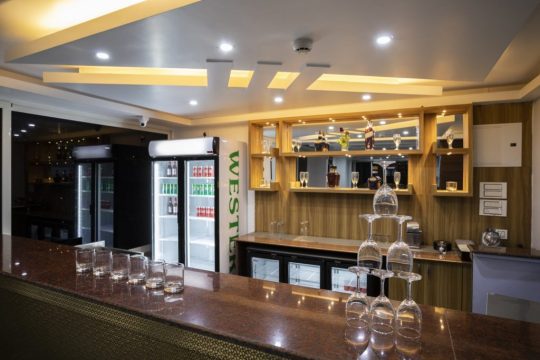
Sairaj beach resort provides stay with breakfast and meals check for packages Book Now Now I will talk about Alcoholic drinks normally taken by both genders 4: Kingfisher Beer

image source google I dont need to tell anything about King fisher beer which is available in-fact all over the world specially in India, ** Please dont drink too much as it is injurious to health** to tell more about the beer it is made in Bangalore it was introduce in 1857 and launched in 1978 you taste this beer all over India when when you taste this same brand in Goa you find a different flavor as you know every state has its own climate enjoying beer at the shake of Goa is something different as informed try a beer but dont over limit your self with any king of drugs.


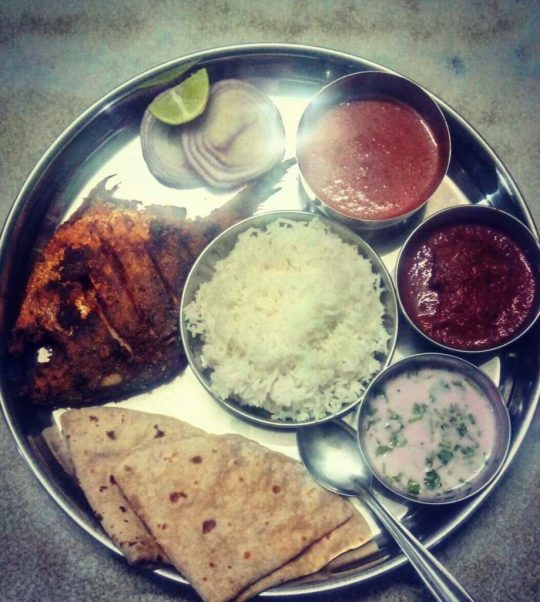
Homestay and home made Malvani food at Matruchaya residency Book Now 5: Feni

image source Feni is spirit produced in Goa, it is safe to drink as it a traditional drink of Goa made of cashew and apple Juice, The two most popular types of feni are cashew feni and toddy palm feni, which you may only find in Goa India. if you want to know how this prepared you will find farmers from Konkan village where they are crushing cashew apples with their feet and distilling the feni in old-fashioned earthenware pots to elite feni festivals. I had tried it one I loved but one minus point I found in it that after you finish your drink and you go to the toilet its stinks a lot even you will feel like your sweat is stinking of feni, however please try to taste it once. Read the full article
0 notes
Text
The Price of Bread in Dungeons and Dragons, Part 3
Part 1
Part 2
Today we're looking at:
Spices and preservation. Let's figure out how to make that food taste good. Transport costs. What, did you think your crops magically teleported themselves to the market?
Next we'll be looking at:
Cutting corners. Getting things without making them yourself, such as hunting and gathering. Land, water, and buildings. Overhead costs- You need to "buy in" before your crops start paying for themselves. These are often outrageously expensive. Craftsmanship. Making things is HARD. And expensive. Drugs. Tobacco, coca, hemp, and opium were all kings in their respective regions.
SPICES
In the real world, medieval cooking was not anything to write home about, if you even knew how to write. The spice trade changed that, albeit at the cost of native people's lives. Along with spices like black pepper, saffron, cinnamon, and clove, we'll also be talking about two of the most important non-spices: salt and sugar. On top of this, we'll also be looking at hemp, tobacco, cocaine, and opium crops.
SALT
Let's begin small, with salt. What is salt? Well, it's one of the simplest chemical compounds, with a crystalline structure. There are three main types of salt. The easiest, and often cheapest, is sea salt.
How do we get sea salt? Easy. Go to the ocean, scoop up a big bucket of salt, and boil that bucket over a fire until only the salt remains. Unfortunately, sea salt is wracked with imperfections. This makes it taste good, but makes it a poor choice for preservation.
The next level up the rung is rock salt, which is gathered from salt flats or a salt mine. It can still add flavor, and is good for preservation, but is more expensive than sea salt. Salt in general is so easy to gather that its price at the market depends more on transporting it there than the cost of labor to gather it. Records from medieval eras say that a man could gather up to 400 pounds of salt per day on his own, but that same man can't transport all that salt, can he?
So let's give ourselves a rock salt mine. They're pulling huge blocks of salt out of this thing every day, and our laborer is going to get 2sp for every 100 pounds of salt he pulls up and refines. This means that at the source, one could buy a pound of raw salt for 2 copper. Now, this is almost never going to be the case. Salt often has to be refined, ground down to a uniform size and shape and that process makes it much more desirable, so the average price at the source for refined salt will be 8 copper.
Now let's say this salt has to be trucked 50 miles away to the nearest urban center. We'll get into details about cargo later in our Transportation section, but for now we'll say transport by camel caravan will cost 1 copper coin, per 100 pounds, per mile. So first, we have to calculate our tonnage. We'll say we'll transport 2000 pounds of salt, which means our cost is 10 copper per mile. The total cost of transporting 2000 pounds of salt 50 miles becomes 500 copper.
Let's see. The manager has already had to pay his men 40 silver to even lift this ton of salt out of the ground. He's paid 900 copper total for this entire process, so he has to make at least 900 copper back in this city. Shouldn't be too hard. He's going to want to make way more money back than he spent, so he's going to sell each pound of salt for 15 copper. If he sells them all, he makes 3,000 gold. This most likely isn't going to happen, at least not in the first city, where salt is cheap and abundant. Still, 3,000 gold is a tremendous return, and practically breaks our economy.
Based on this, we'll call raw sea salt 1 copper per pound, and refined sea salt 10 copper per pound because of the level of effort required.
Anyway, the last type of salt is spring salt, which doesn't need to be refined. Unfortunately it's significangtly rarer, and does still need to be boiled off. A pound of this is going to cost 25 copper at the source, and significantly more the further away one gets.
I'll talk about sugar and how to get it places under the cut.
SUGAR
Sugar comes from two main sources: sugarbeet and sugarcane. Sugarbeets grow in damn near any climate, but sugarcane provides more sugar per plant. Either crop is diced into pieces and then crushed to release the sugar syrup. This syrup is boiled down and then one is left with refined sugar crystals. Of course, this isn't as easy as it sounds, or else everyone would be doing it, and our economy would be based on sugarcane instead of bread. We don't want that.
Doing what I just described will come out with what is known as raw sugar- perfectly fine for most people's uses. Raw sugar can be further worked into refined sugar, which is considerably smoother and finer, and a must-have for bakers. Get read for the price of cakes to skyrocket.
Our sugar farmer plants 100 pounds of cane or beets. If it's cane, he gets 8000 pounds of sugarcane at harvest time. If it's beets, he gets half that, or 4000 pounds. Either way, only about 5% of this weight is actually sugar. Our farmer gets 400 pounds of cane sugar, or 200 pounds of beet sugar. Regardless of its origin, one pound of raw sugar is going to cost 1 silver, meaning our farmer gets 40 gold per acre of cane, or 20 gold per acre of beets.
The commoner doesn't care about refined sugar, but the baker and the bourgeois do. Refining sugar is just redoing the refining process until it's perfect, so we'll set the price of refined sugar at 25 copper per pound, or 2.5 times as much as raw sugar.
Not all of that waste is actually waste. For every ton of raw sugar produced (or for every 5 acres of sugarcane, the value is the same), one gallon of molasses is also produced. Molasses isn't as desired as sugar, but can be sold in smaller quantities, so we'll sell quarter-gallons of molasses for 5 copper each.
OTHER SPICES
Now, our other spices will more than likely come from far-off lands whose name you can't even pronounce, which means we get to jack the price up significantly.
Luckily, mustard simply comes from seeds, and those seeds grow in Bronzeisle. It can be found wild, or grown quite easily. At the market, a pound of mustard comes to about 2 silver. Making mustard depends on how you want it to taste, but we'll assume a basic mustard recipe of vinegar, mustard seeds, spices, and salt. You can buy the mustard seeds and the quantities you need for this at about 5cp each, or 10 together.
Spices can vary a lot, so we'll just say local herbs cost about 1 silver a pound. Your far-off herbs can cost a bank-breaking amount. In real life, 1 gram of saffron costs 15 dollars on average, so with that in mind, we will set the price of saffron, essentially the most prized spice in the world, at 70gp per pound. See how out of hand this can get? That's more than a longsword, at least in base rules.
Let's not forget about pepper, though. In real life, pepper is from India, so in Bronzeisle, it will be from a similarly far-off land. A pound of black pepper will cost 3gp, but most people aren't buying pounds of pepper. A little goes a long way with practically any spice.
PRESERVATION
We talked about salt and sugar earlier because they're the most basic methods of preservation. So let's discuss what the end cost of that preservation is.
Let's look at a ham. The average ham will weigh about 15 pounds if it's from a nice-sized, healthy animal. That raw ham will cost 30sp, at 2sp per pound. Meat is expensive, remember? Now, for simplicity's sake, we'll say that preserving meat will require 1/10th of its weight in salt. This 15 pound ham requires 1.5 pounds of salt, which we'll say we bought at the source for 3 copper.
The ham is going to lose 20% of its weight from curing, so we end up with a 12 pound cured ham. We'll just say that each pound of cured ham is 3 silver, meaning the entire thing will cost 36 silver. Definitely a Generosity Day meal, unless you're rich.
Next we'll take a look at salting fish. Preserving with salt can be a little expensive in large numbers, but that goes away when we remember that we just caught these fish from the ocean. We haven't actually discussed fish that much, so now seems like a good time to.
We'll assume a good fishing area for the following. We'll price fish at 1 silver from the source, which is the same as poultry at the source. However, fish tends to go bad very quickly, so there's not much place you can buy it from other than the source. Again, we can preserve the meat to make it last longer, so we'll salt 10 pounds of fish. The cost of salt would be negligible, but we'll do it anyway. Salting 10 pounds of fish will cost us 2 copper in salt. We'll quadruple the price and sell the salted fish for 4 silver per pound. If a fisherman does all of this himself, catching and salting 40 pounds of fish is making him 16 gold. However, it's very unlikely he'll salt all of that, and even less likely that he'll catch that much.
Our fisherman can catch, say, 20 pounds of fish and make 20 silver a day, which is twice as much as the average laborer or salt miner.
Next we have sausage. Sausage is an odd subject. It can be made of beef, pork, and chicken, all blended together into a sort of mix. Remember how the animal carcasses would leave lots of leftover weight? Well, we're making sausages out of that. It can vary substantially, but we'll say our "beef" sausage is 50% beef parts, 30% pork parts, and 20% chicken parts. We'll price buying generic animal leftovers at 1 silver per pound. They're not exactly desirable this way and have to be smoked. They're then sealed in a clay pot with tallow or, more commonly, packed in the animal's own intestines, tied off, and hung up until dry.
Our finished sausage comes out to 3 silver per pound. It might be more or less expensive if it was hunted instead of raised.
Pickling is an interesting process. You take a gallon of water and add a half pound of salt, then soak your desired food-to-be-pickled in it. Then you store it in vinegar. Pickled foods last significantly longer. Our pickled vegetables will go for about 1 silver per pound, and we'll make pickled chicken or pork 5 silver a pound. Pickled beef is often made of lesser cuts of meat, so we'll make it 8 silver a pound. The usual ratio is going to be 1 gallon of vinegar per pound of pickled whatever. Our vinegar, which is nominally white vinegar, is 1 silver per gallon.
Finally, there is canning. Technically, canning wasn't invented until the 1800s or so, but we're putting preserving food in jars under the umbrella of canning, since home canning today is often done with mason jars. The basic process of preserving food in cans is stuffing it in water and either salt or sugar.
The reason behind canning fruits is that most of them only grow in the summer. Fresh fruit is all but gone by winter, so while canning masks some of the flavor behind a sugary mass, it also saves those fruits for later. Some is better than none.
Anyway, we're going to can a pound of food with a quarter pound of salt or sugar. For fruit, we use sugar. For vegetables, we could use either. For meat, we can use either too, but it's usually salt.
Since 1 pound of sugar costs 1 silver, our quarter pound of sugar has to be rounded up to cost 3 copper. Our fruit is going to cost 1 copper per 2 pounds. Our cost right now is a measly 4 copper, but watch this: a glass jar fit for canning is going to cost us 1 silver. Now, we could can larger amounts of food in larger glass jars, but overall we're looking at an average price of 14 copper to the maker. The maker's going to sell this for between 20 and 25 copper. We'll go with 20 copper.
It's important to remember that because preserves are, well, preserved, you can't buy smaller quantities of them than how they're sold. The batch will spoil as soon as it's exposed to the air. If a pound of canned preserves is sold, you have to buy them by the pound, and lucky for us, this is how most are sold. The cost of the container the maker is losing is offloaded onto the buyer, but to make up for this, the buyer now has a container. We'll talk about containers in detail another time.
TRANSPORT
Alright, enough about food. Let's talk about how to get it places. There are three main ways of shipping goods- namely caravans, ships, and airships. The main differences between them are land, sea, and air.
We said before that a camel caravan's cost per 100 pounds per mile is a copper piece, meaning they have to travel at least 1 mile with 100 pounds of goods to make even one copper piece. In Bronzeisle, things are fairly good, so we'll say than one camel can carry 1000 pounds of goods, whatever they may be. A caravan of 10 camels can carry a maximum of 10,000 pounds of goods. They can also travel for 25 miles a day, in good conditions. These camels don't walk places on their own, though. They're tended to by handlers and caravan guards.
Handlers are usually paid the average wage of 10 silver pieces. There needs to be one handler per 5 camels, with a mininum of 1, and the caravan usually has an equal number of guards. The guards are paid the same amount, and both have their food, equipment, and living expenses covered by the caravan company while on the route.
So let's give ourselves a team of 20 camels, which requires 4 handlers and 4 guards. They need to be paid 80 silver a day altogether. Our salt example of 2000 pounds gives us 500 copper, but our 20 camels can carry ten times that. The caravan is only going to go with space left if it absolutely has to. If we fill up the caravan and travel just ten miles, we're making 20 gold. Camel caravans are good business. If our caravan travels 50 miles to the nearest city we're making 100 gold.
A better, but more expensive way to truck goods would be wagons instead of putting the materials on the animal's back. We'll say we have three different sizes of wagons: small, medium, and large. A small wagon can be pulled by two horses and carry up to 10,000 pounds. A medium wagon, four horses and 15,000 pounds. A large wagon, six horses and 20,000 pounds.
History says it would've taken four men several weeks to make a wagon of roughly medium size, so we'll say our wagons take 20, 40, and 60 days to make. Luckily, a wheelwright, a blacksmith, and a carpenter, when hired, all make about 10 silver a day. On this project we have two carpenters, a wheelwright, and a blacksmith, so paying them all is 40 silver a day just for labor.
Now we're starting to get into overhead costs. We have to look at materials, so let's add on another 100 silver at the minimum for the wood, steel, and wheels. For each additional size we'll add on another 50. You're looking at the following for prices.
900 silver (90gp) for a small wagon (800 for labor, 100 for parts) 1750 silver (175gp) for a medium wagon (1600 for labor, 150 for parts) 2600 silver (260gp) for a large wagon (2400 for labor, 200 for parts)
This is an incredible amount, but our salt salesman can buy a large wagon if he runs a ton of salt to our nearest city. One wagon, though.
We can assume this wagon will last 5 years, or 1800 days. It should last far longer than this, but we're accounting for risks in our profit. We'll give them a large wagon. Our caravan needs to make back 2600 silver per wagon in less than 3600 days.
Now seems like a good time to establish the cost of a horse. We'll say 20gp. Horses can be eaten but we're not gonna do that. Not yet, anyway. This wagon needs 6 horses, so 120gp. Those horses each need 2 pounds of feed corn a day, which is 12cp for the lot of them.
Each wagon is going to require a driver, 2 teamsters, and a guard. The guard and driver are going to make 10sp a day, and the teamsters are going to make 5 each. The caravan costs 20 silver a day based on its human complement, but day to day expenses are, so far, 212 copper.
We need to feed our four people, and we're going to call it 16 silver, a mix of meat, bread, and vegetables. 4 silver per man per day. This makes our day to day costs 372 copper.
We're now going to spread the cost of building a wagon out over its expected lifespan of 5 years, which comes out to 2 copper a day. Not much. We have to make more than this when we get paid, which we almost certainly will. Let's fill our wagon with 20,000 pounds of salt again and travel to the nearest city, 50 miles away. We haven't set a price for the wagon yet, or how fast it travels. We'll say it travels for 20 miles per day, and trucks for a cost of 2cp per 100 pounds per mile. So if our wagon was hauling our salt to the nearest city, this is what we get.
It takes two and a half days to get there, at 2cp per mile. The caravan makes 200 gold from doing this. The reason someone would pay twice the price is because wagons can haul things like meat, because they are often refrigerated. There's less exposure to the elements as well, being covered. Wagon train members are also known for being more trustworthy, and there is less likelihood of things just "falling off the camel".
We're making good money from caravans, but what about ships?
Well...they're expensive.
There's obviously a huge disparity between ship sizes. We're going to order a ship with a capacity of 30 tons (60,000 pounds) from the shipwright. A ship this big is going to require a captain, two officers, and 30 sailors that will perform various duties. For simplicity's sake we're going to have them all make 15 silver a day, more than the average skilled laborer because of the job's danger. The captain only makes 20 silver- 5 more than his crew- but gets a cooler suit and a nicer office, as well as 5% of the profits from the ship's haul.
This means it costs 500 silver per day to run a ship. We'll just say this average ship costs about 7500 gold, and takes two years to produce by about 100 skilled laborers. 7500 gold over 15 years is about 14 silver a day.
We can say that this ship makes about 50 miles a day on average in the open water. This is obviously much faster than a caravan, but the risks are MUCH bigger. A freak storm or a pirate attack can sink an entire ship and cause you to lose your cargo instantly. This means the shippers have to cover their risks. They're going to charge 1 silver coin per 100 pounds per mile- ten times as much as a camel caravan, and five times as much as a wagon.
Now instead of taking our goods to another city 50 miles away, we're going to take it 500 miles away to another island. Same amount- 20,000 pounds.
It takes 10 days to get to the new location, assuming good conditions. The caravan makes 10,000 gold from this, or 30,000 gold with a full complement. The captain makes 500 gold, or 1500 gold with the full complement.
Finally, airships. How expensive are they? Well, they don't exist in real life. We're now going to just make up numbers. We've been doing that this whole time, but now we're making up some real numbers.
A cargo airship with a capacity of 20 tons (40,000 pounds) is going to run us 10,000 gold. It'll take a team of 100 or so laborers about two and a half years to make. It'll probably last 20 years, which actually means it's also worth 14 silver per day.
It requires less laborers, only 20, but they'll want more money. Each laborer is going to want 20 silver a day, and the captain will want 30. He also takes 5% of the cut when they make their money at the end. They're going to be able to go 100 miles per day. Risk is high, not to mention expedited shipping. Airships have to contend with skyrates, dragons, and rival airships. Air battles tend to be intense, and undesirable, so most airships, even cargo ships, are armed.
Our cargo ship currently costs 430 silver per day to run. Because of the intense risk, the airship is going to charge 5 silver per 100 pounds per mile. On our 500 mile run, they're making 50,000 gold off trucking 20,000 pounds of goods. With a full load they make 100,000 gold.
As you can see, shipping is extremely profitable. The buy in for shipping means it's also extremely difficult to get into. And of course, all these prices assume no loss of cargo, no piracy, and a constant flow of people that want goods shipped. This isn't always the case. Next time we'll show you how people in Bronzeisle cut corners when there's not enough to go around.
Part 4
15 notes
·
View notes
Text
WallArt: Eco-Friendly THREE DIMENSIONAL Wall Sections Made from Bagasse
WallArt: Eco-Friendly THREE DIMENSIONAL Wall Sections Made from Bagasse
You must have realized that in the world of modern interior design ripped and nondescript surfaces are now being gradually replaced with quantity and structure. More and more often, every time a space requirements some type and mechanics interior developers resort in order to 3D wall structure panels. Their particular textured, 3-dimensional look will be chic, first and innovative. And when along with a touch of colour and made from 100% environmentally friendly biodegradable materials, they turn into a real capture.
All of this refers to ornamental 3D wall structure panels made by WallArt, the 6-year-old business from the Holland. It goes without saying the aesthetical factor and wow-effect of 3-dimensional wall sections is something which attracts individuals to them mainly. But we should not forget to say that recently it has be obvious that individuals increasingly go for natural plus eco-friendly components. They need to believe that their home is really their fortress and not therefore willingly purchase synthetic plus potentially dangerous products regardless of their stunning look.
That is why it is especially important that WallArt panels are manufactured from eco-friendly plus 100% eco-friendly and compostable material – bagasse. We all already know this particular material from your post regarding eco-friendly bagasse tableware. Allow us to recall this is fibrous residue associated with sugar creation. When sugarcane gets disposed to get the fruit juice for further sugars production, the particular residues – fibres associated with crushed sugarcane stalks – are not ideal for human usage. But they great manufacturing… 3 DIMENSIONAL wall covers. From several tons of sugarcane people obtain 1 great deal of bagasse. And considering the fact that sugarcane could be harvested as much as 3 times per year, bagasse is definitely justly regarded as one of the most green resources. fully eco-friendliness associated with bagasse wall structure panels makes it a properly safe approach to all areas of the house, which includes bedrooms. In order to crown everything, WallArt 3 DIMENSIONAL wall sections are washable , that allows for using them within kitchens plus toddler areas.
But how about design restrictions? In fact , right now WallArt offers 24 various designs offered: minimalist Tetris and loft-style Bricks, classy Waves plus futuristic Spaces, ascetic Cubes and flower Saiphs yet others – it has an option for any kind of interior design, from extremely modern in order to rustic.
And lastly, 3D wall structure panels simply by WallArt can be coated . Here it is matter of the choice: you are able to either keep them whitened to add several intrigue towards the interior or even add some strong color sprinkle to make the walls a focal point of your internal. Given that the particular top-trend colour for 2017 is greenery, any shades of eco-friendly would appear fashionable – from succulent lime in order to saturated emerald green. Diluted along with pale grey, powder red, neutral beige or whitened, such a 3 DIMENSIONAL wall can make the interior extremely on-trend.
Lastly, one more good idea is usually coating the particular WallArt sections with chemicals inspired simply by metals – bronze, magic or precious metal. Metallic shades are trendy per se, nevertheless applied on 3-dimensional surfaces plus highlighted simply by accent lamps, they produce especially amazing feel.
Source:
http://www.interiordesign2014.com/architecture/wallart-eco-friendly-three-dimensional-wall-sections-made-from-bagasse/
0 notes